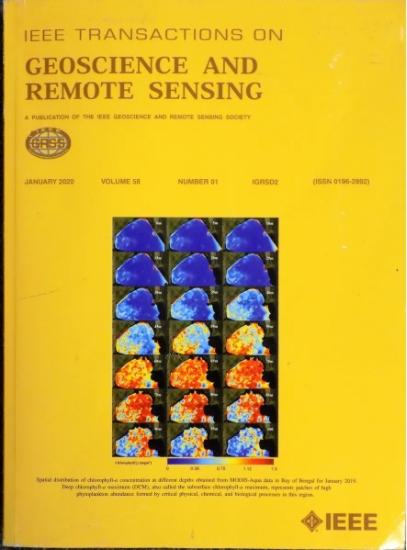稀疏Gabor变换及其在地震数据分析中的应用
IF 7.5
1区 地球科学
Q1 ENGINEERING, ELECTRICAL & ELECTRONIC
IEEE Transactions on Geoscience and Remote Sensing
Pub Date : 2025-04-14
DOI:10.1109/TGRS.2025.3560299
引用次数: 0
摘要
考虑到Gabor变换(GT)由于不确定性原理导致的时间和频率分辨率不能同时最大化的限制,我们提出了一种时频谱(TFS)的后处理策略来缓解这一限制并提高时频集中。在地震数据频带内,GT的时间和频率窗大小是固定的,这意味着GT的TFS是由高分辨率TFS与高斯形点扩展函数(PSF)的二维卷积形成的。因此,基于压缩感知理论,我们对TFS使用稀疏约束,并使用乘法器算法的交替方向方法对GT的TFS进行二维反卷积,以消除时频窗函数的影响。用于反卷积的PSF由时间窗和频率窗的方差决定,通过改变PSF的大小,我们可以得到频率稀疏GT (FSGT)和时间稀疏GT (TSGT)。仿真信号验证了该后处理策略的有效性。对于实际数据,我们证明了稀疏Gabor变换通过将薄层识别和频率相关振幅变化与偏移属性相结合,可以增强地震数据的时频集中,提高地震数据分析的精度。本文章由计算机程序翻译,如有差异,请以英文原文为准。
Sparse Gabor Transform and Its Application in Seismic Data Analysis
Considering the limitation of the Gabor transform (GT) due to the uncertainty principle, where time and frequency resolution cannot both be maximized simultaneously, we propose a postprocessing strategy for the time-frequency spectrum (TFS) to mitigate this limitation and improve time-frequency concentration. In the frequency band of seismic data, the time and frequency window sizes of the GT are fixed, implying that the GT’s TFS is formed by the 2-D convolution of a high-resolution TFS with a Gaussian-shaped point spread function (PSF). Therefore, based on compressed sensing theory, we use sparse constraints to the TFS and solve the 2-D deconvolution of the GT’s TFS using the alternating direction method of multipliers algorithm to eliminate the influence of the time-frequency window function. The PSF used for deconvolution is determined by the variances of the time and frequency windows, and by altering the size of the PSF, we can obtain frequency-sparse GT (FSGT) and time-sparse GT (TSGT). Simulation signals demonstrate the effectiveness of this postprocessing strategy. For actual data, we prove that the sparse Gabor transform can enhance time-frequency concentration and improve the accuracy of seismic data analysis by integrating thin layer identification and frequency-dependent amplitude variation with offset attributes.
求助全文
通过发布文献求助,成功后即可免费获取论文全文。
去求助
来源期刊

IEEE Transactions on Geoscience and Remote Sensing
工程技术-地球化学与地球物理
CiteScore
11.50
自引率
28.00%
发文量
1912
审稿时长
4.0 months
期刊介绍:
IEEE Transactions on Geoscience and Remote Sensing (TGRS) is a monthly publication that focuses on the theory, concepts, and techniques of science and engineering as applied to sensing the land, oceans, atmosphere, and space; and the processing, interpretation, and dissemination of this information.
 求助内容:
求助内容: 应助结果提醒方式:
应助结果提醒方式:


